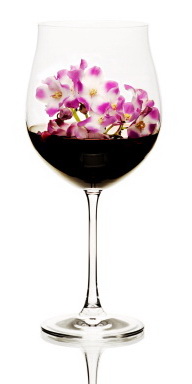 Cinsaut, or Cinsault as it is sometimes called, is a dark-skinned red vitis vinifera grape that’s often blended with Grenache, Carignan and Syrah grapes to add softness and bouquet to a wine.
Cinsaut, or Cinsault as it is sometimes called, is a dark-skinned red vitis vinifera grape that’s often blended with Grenache, Carignan and Syrah grapes to add softness and bouquet to a wine.
You’ll find my Top 10 Cinsault reviews and ratings here.
5 Surprising Facts about Cinsault:
1. Cinsaut is the fourth-most planted grape in France.
2. A French grape in origin, it’s unusual to see Cinsaut produced as a single varietal comprising 100% of the wine.
3. Cinsaut is light in body and low in tannin, and adds lovely perfumed aromas of red berries to its blends, especially when harvested young. It is one of 13 minor grapes permitted in the coveted Chateauneuf-du-Pape wines of the Rhone Valley in France. Cinsaut also adds a fruity bouquet to the Rhone’s Tavel rosés.
4. Cinsaut has been grown for centuries in the southern French region of Langeudoc-Rousillon. Its drought resistance and high yields have made Cinsaut the workhorse grape of this region’s wine production.
 5. In 1925, Cinsaut was crossed with Pinot Noir to create South Africa’s signature grape Pinotage, initially called Hermitage.
5. In 1925, Cinsaut was crossed with Pinot Noir to create South Africa’s signature grape Pinotage, initially called Hermitage.
Pinotage now outproduces Cinsaut in the country’s Western Cape region. Cinsaut is also successfully grown in Algeria, Australia and Lebanon, where it is the lead grape in the country’s flagship wine, Château Musar.
Cinsaut is finding a minor resurgence in Italy, especially in the southern region of Puglia. Cinsaut is also sold as edible table grapes in both France and Australia.
A Cinsaut blend wine is a perfect pairing to many French cheeses, such as Gruyère and Brie.
When you join our wine community as a Paid Member, you’ll get access to all of my Cinsault wine reviews, which are updated weekly.







